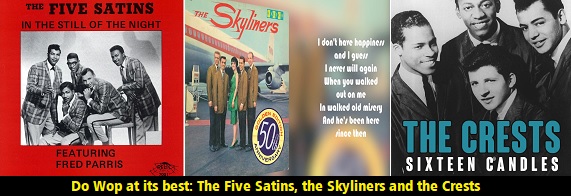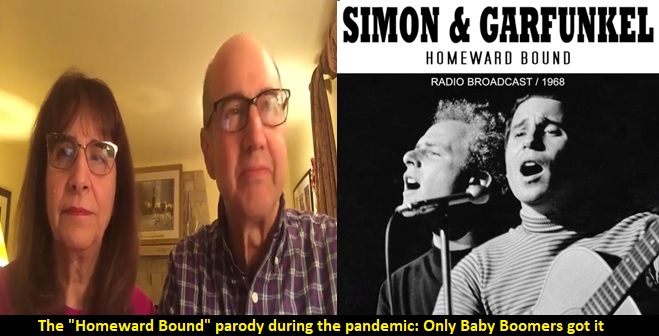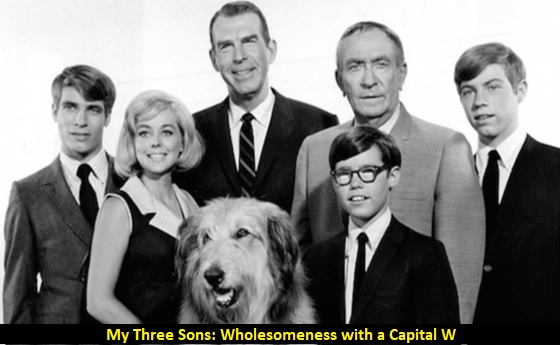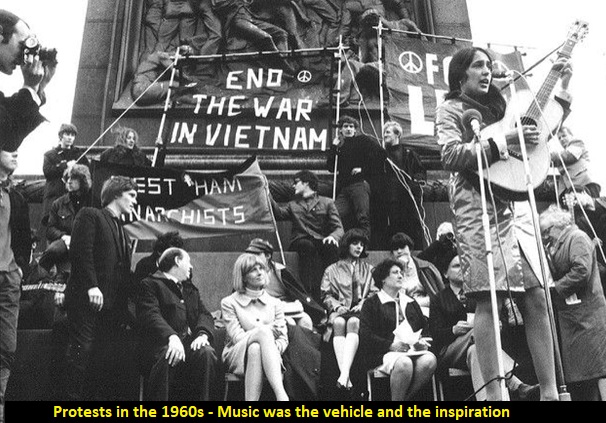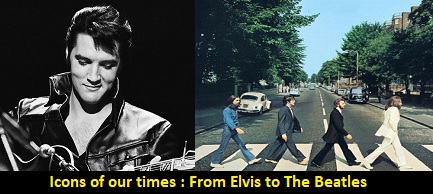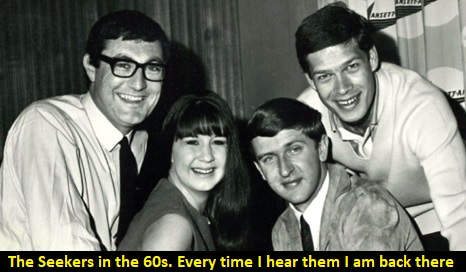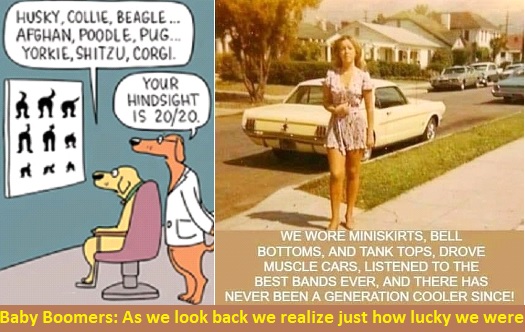As I was reflecting back on our baby boomer years, I came across this funny cartoon by a clever cartoonist named Hilary B. Price. She herself is a baby boomer as she was born in 1969. She is clever and her humor is so excellent. I recommend for anyone who liked this cartoon to visit Hilary’s wonderful website rhymeswithorange.com and learn more about her. The reason why she entitled her website “Rhymes with Orange” is because few things – or nothing – rhymes with the word orange! That is her tongue-in-cheek brilliance! This cartoon of hers, however, speaks of us as baby boomers as we now use our hindsight to look back in our rear-view mirror. The prom dates are over, the marriage ceremonies and the birth of the children are in the past. The gray hairs have arrived as well as, for some of us, the title of “grandpa or grandma”. These indeed are days for us to look back and, in my opinion, to see just how lucky were to have grown up during the times when we did.
As Baby Boomers reflecting on our youth, there’s a complex tapestry of emotions and memories that flood the mind. We were born into a time of post-war optimism, economic prosperity, and significant cultural change. Looking back, ours is a blend of nostalgia, pride, and sometimes a tinge of wistfulness for the days gone by.
Growing up in the ’50s and ’60s, we were witness to a world evolving before our very eyes. The music, the fashion, the movies—all of it was changing rapidly, and we were at the forefront of the cultural revolution. Our parents, many of whom had lived through the hardships of the Great Depression and World War II, wanted us to have the opportunities they never had. This sense of hope and possibility shaped our upbringing.
One of the defining characteristics of our youth was the music. The sounds of The Beatles, The Rolling Stones, Bob Dylan, Joni Mitchell, The Monkees, and many others provided the soundtrack to our lives. The lyrics spoke to our generation, capturing our spirit of rebellion against the Vietnam war and against the status quo and our desire for change. Even now, hearing those songs transports us back to a time when anything and everything seemed possible.
There was also a strong sense of community during our youth. Neighbors knew each other, kids played outside until the streetlights came on, and there was a feeling of safety and camaraderie among all of us. We didn’t have smartphones or social media to connect us, but we didn’t need them. Our social lives were built around face-to-face interactions, and there was something special about that. We played in our local school yards and outside our homes.
As we entered our teenage years, the world around us was in turmoil. The Vietnam War divided the nation, and many of us faced the prospect of being drafted. The civil rights movement was in full swing, challenging what we felt were long-standing injustices and pushing for a more equal society. These were turbulent times, and they left a lasting impact on our generation and on America.
Looking back, there’s a sense of pride in us about how we navigated those difficult years. We protested for what we believed in, stood up against injustice, and fought for a better world. The activism of our youth laid the groundwork for many of the social changes that followed.
Now, as we find ourselves in the later stages of life, we feel a certain nostalgia for those days of youth. The simplicity of life back then, the thrill of new experiences, and the feeling of endless possibility—all of it is etched into our memories. We look at the world today with a mix of awe and concern, wondering what kind of legacy we will leave for future generations.
We also have a sense of fulfillment in seeing how far we have come. We’ve witnessed incredible advancements in technology, medicine, and human rights. The world today is vastly different from the one we grew up in, and we baby boomers share a sense of pride in knowing that we played a part in shaping that change.
But there are also moments of wistfulness, a longing for the days when things seemed easier and the future was full of promise. We miss the friends we’ve lost along the way, the places that hold special memories, and the moments that shaped us into who we are today. Many of us baby boomers live alone. Our spouses may have passed away and the children have moved away to pursue their own lives. This is why we have created PhotographsandMemories.com (or PhotoMem.com for short). On here we can revisit our wonderful past days, make new baby boomer friends and chat with them and not be lonely.
In the end, being a Baby Boomer looking back on our youth is a complex and bittersweet experience. It’s a journey through time, filled with highs and lows, triumphs and regrets. But through it all, there’s a deep appreciation for the experiences that have made us who we are—a generation shaped by the tumultuous but transformative years of the late 40s, 50s and 60s.
